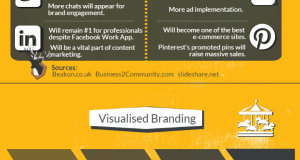I was visitng the ASPCA site today to learn more about the animals in trouble when I noticed that they had an XML button to let you keep track of their news stories and press releases. So why don’t we have one on cancer.org? I mean bloggers, new sites, and slashdot are one thing, but now were being upstaged by other non-profits? Anyone else think this problem needs to be addressed. I know we are in the midst of helping to spread information about cancer victims and Katrina, but wouldn’t an XML feed help spread that information even farther? Just a thought and I hope we can add that soon.
No comments
Leave a Reply
You must be logged in to post a comment.
 501derful.org
501derful.org




Yes! I think we could use a site feed. Actually, our site is so big, it might make more sense to have separate feeds: one for press releases, one for each organ/site-specific cancer information subsite, etc.
I also think we need a better search engine right away. I don’t even use the on-site search engine at http://www.cancer.org most of the time, but rather do a Google search restricted to the cancer.org domain.
First you have to change your mindset about what the future of the net is. Tomorrow won’t be about web sites as we have done them. It’s be about getting people to subscribe to feeds. Stuff burried way down in old web sites can be surfaced and made dynamic by presenting their feeds. Tomorrow isn’t about URLs to static sites; it’s about dynamic interactions between between participants and the mesh of RSSs they opt into. It’s about engaging with contributors, not just shoveling to consumers.
That is a very good point. Can you say more about how having a site feed (or a news service feed, or whatever) and subscriptions make contact more dynamic and user-centered?
To me, a user pulling data from the web just by searching seems more individualized than the user choosing feeds to subscribe to. But maybe I’m not understanding what can be done with them. I guess they could keyword-search their subscriptions, and organize them as they chose…?
So, you can teach an old dog (ASPCA) new tricks.-) Groan!
The earliest model for the web was a library or shopping catalog. The tools for a new web that is not modeled on a page are just emerging. For instance Firefox has one-clck RSS subscribing built in and so will the next IE. There’s a new browser out there called Flock that is designed for “social browsing.” I take that to mean easier threading together of social information such as blogs, contact sites, Flickr, podcasts. Maybe one-click trackbacks from your browser so reciprocal interaction is easier. Why not a browser that makes commenting on blogs possible by replying to their RSS feed with your own RSS instead of going to each site. The traditional browser is just for receiving. The new browser needs to make connecting, generating and contributing easy from one tool rather than jumping to many sites.
In any case I think web users are now more interested in interacting than in surfing and receiving. They’ll narrow down who they want to stay in touch with and use the browser to interact and communicate in near real-time. They won’t be much interested in static reading sites. Besides, large amounts of content burried inside sites like cancer.org can be streamed and kept up to date by RSS instead of requiring users to drill down over and over. After subscribing you don’t ever have to go to the original site again. But the real change is the web as a constant flow of interaction. Or, as someone put it in Wired: “Web 2.0 is a stream of events, people and connections.” A better browser is one that will understand this new user environment.
I see ADA has added an RSS feed to their diabetes news stories. http://www.diabetes.org/indiabetestoday.jsp